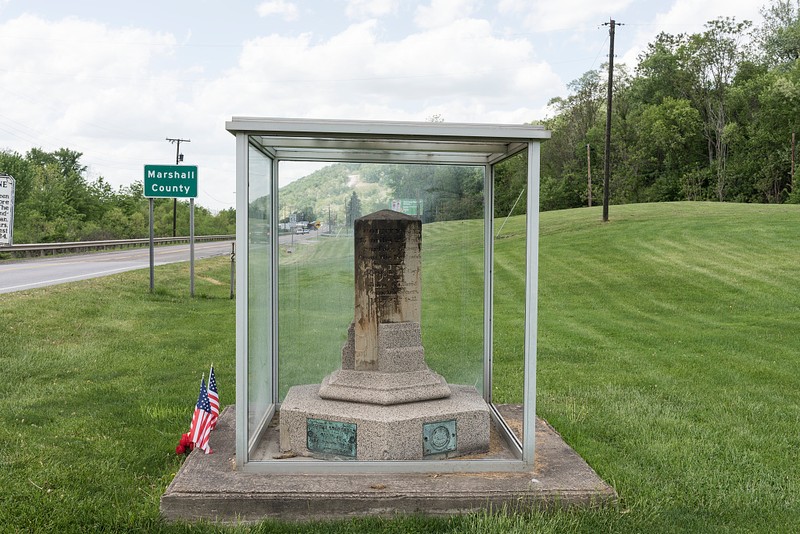Wetzel/Marshall County Line Monument
Introduction
Text-to-speech Audio
Images
A photo of the Mason Dixon Monument, right beside the Marshall County line.

Backstory and Context
Text-to-speech Audio
Discovered sometime in July of 1929, this monument is located right along the Wetzel/Marshall County border. The monument was uncovered by Clarence Snow and his crewmen from the C&P Telephone Company. When it was discovered, only the top of the monument was visible. The workmen dug about two or three feet to uncover the wording at the bottom of the limestone fixture.
The lettering on the western side of the stone read: "County Line - 17 Miles & 50 poles - surface measure - from Penna. Corner - Joseph Mccoy - and - John Gilchrist - Commissioners - May 27, 1833."
The south side read: "Tyler county - Now - Wetzel - Co. April 6th - 1846 --." It appeared that the "Now Wetzel County,” was written after Tyler County had already been inscribed into the stone.
The north side of the stone reads: "Ohio County - Erected by - C. P. Wells - And - J. Gilchrist - Now - Marshall - County - May 1st A. D. 1835." Like Wetzel County, the "Now Marshall County" was written in after Ohio County was already carved into the stone.
Marshall and Wetzel Counties were both created after Ohio and Tyler. Ohio
County was formed in 1776 and Tyler County was formed in 1814. Marshall County
broke off from Ohio County in 1835, and Wetzel formed from Tyler County in
1846.
The monument is often mistaken as a marker for the Mason-Dixon line, but the Mason-Dixon ends in Board Tree, in the southwest corner of Pennsylvania, which is relatively far from the site. The sign to the side of the monument tells about the Mason-Dixon line, which likely leads to the misconceptions regarding this historic monument.
Sources
Fluharty, Linda Cunningham. "Boundary Line Marker Uncovered at Proctor." Wetzel Democrat(New Martinsville), July 05, 1929.
Fluharty, Linda Cunningham. "County Line Marker is Not of Mason-Dixon Origin." Moundsville Echo(Moundsville), July 31, 1931.
